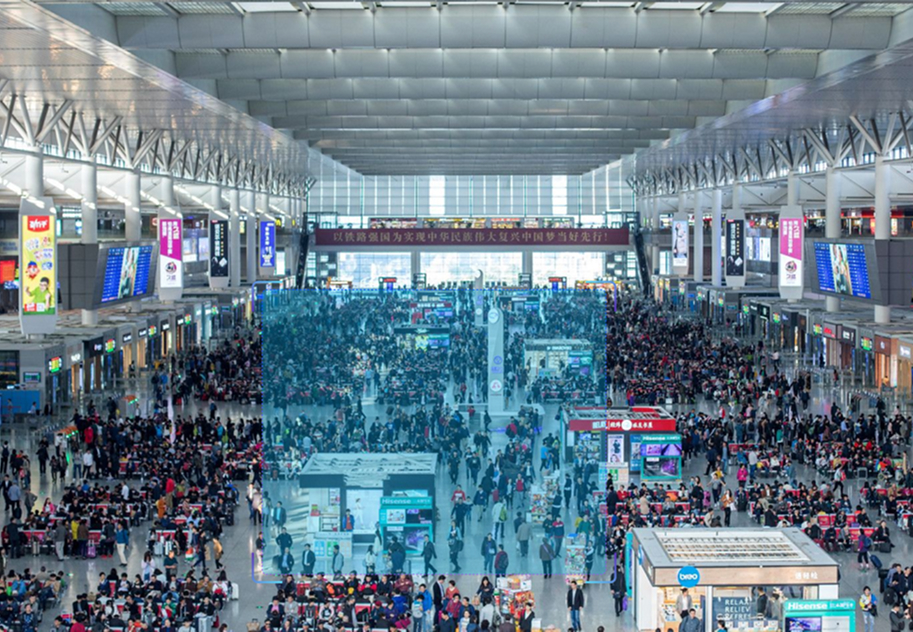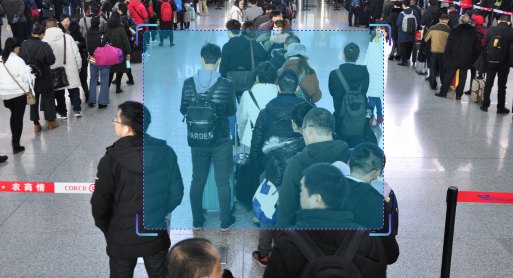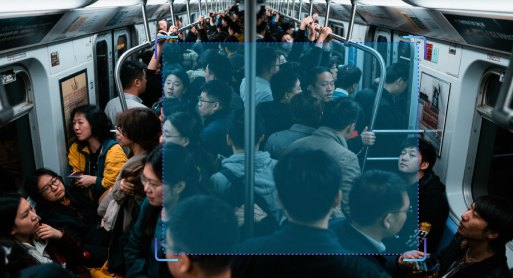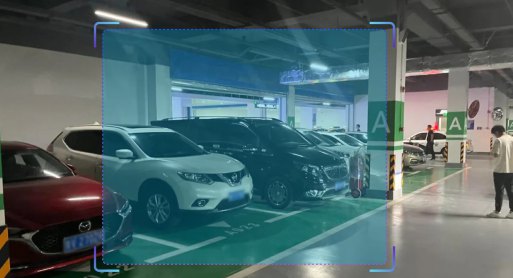
Static Crowd Counting

Algorithm Introduction
Utilizing AI vision algorithms to count instantaneous crowd density in key areas of public venues such as airports, stations, exhibition halls, scenic spots, schools, and stadiums, enabling real-time crowd guidance, flow control, and early warning for overcrowding risks in core areas to support urban management.
- ● Optimal deployment: 3-10 meter medium-close range top-down shooting with low-angle cameras targeting head points for instantaneous crowd counting
- ● Brightness requirements: Minimum bright pixel ratio (grayscale value >40) of 50% in the target area
- ● Image requirements: Optimal detection performance at 1920×1080 resolution
Application Value
-

Metro/Station Areas
This AI algorithm performs in-depth analysis of video footage, providing real-time statistics on the number of passengers waiting at stations and undergoing security checks. It supports efficient crowd flow management by utilizing scientific methods, alleviates congestion during peak hours, and safeguards travel safety. -

Scenic Area Security Checkpoints
This algorithm rapidly captures crowd data and dynamically allocates security screening resources based on real-time visitor counts. This reduces queue backlogs and ensures smooth visitor flow.
FAQ
-
Algorithm AccuracyAll algorithms published on the website claim accuracies above 90 %. However, real-world performance drops can occur for the following reasons:
(1) Poor imaging quality, such as
• Strong light, backlight, nighttime, rain, snow, or fog degrading image quality
• Low resolution, motion blur, lens contamination, compression artifacts, or sensor noise
• Targets being partially or fully occluded (common in object detection, tracking, and pose estimation)
(2) The website provides two broad classes of algorithms: general-purpose and long-tail (rare scenes, uncommon object categories, or insufficient training data). Long-tail algorithms typically exhibit weaker generalization.
(3) Accuracy is not guaranteed in boundary or extreme scenarios.
-
Deployment & InferenceWe offer multiple deployment formats—Models, Applets and SDKs.
Compatibility has been verified with more than ten domestic chip vendors, including Huawei Ascend, Iluvatar, and Denglin, ensuring full support for China-made CPUs, GPUs, and NPUs to meet high-grade IT innovation requirements.
For each hardware configuration, we select and deploy a high-accuracy model whose parameter count is optimally matched to the available compute power.
-
How to Customize an AlgorithmAll algorithms showcased on the website come with ready-to-use models and corresponding application examples. If you need further optimization or customization, choose one of the following paths:
(1) Standard Customization (highest accuracy, longer lead time)
Requirements discussion → collect valid data (≥1 000 images or ≥100 video clips from your scenario) → custom algorithm development & deployment → acceptance testing
(2) Rapid Implementation (Monolith:https://monolith.sensefoundry.cn/)
Monolith provides an intuitive, web-based interface that requires no deep AI expertise. In as little as 30 minutes you can upload data, leverage smart annotation, train, and deploy a high-performance vision model end-to-end—dramatically shortening the algorithm production cycle.






